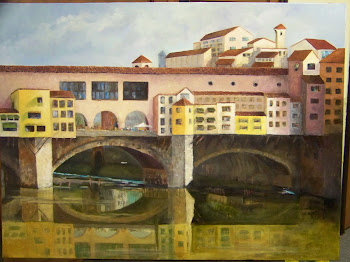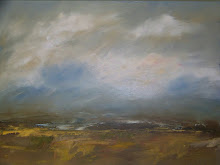So often, a blog will be perfect....something that rings a bell, says exactly what I wish I had said....or teaches me something new
Today, I woke up to a new posting from Dianne Hales of Becoming Italian, Word by Word. In her blog, Dianne teaches us how to speak, or at least understand, the Italian language. Her posting today explains how New Years came to be.....leave it to the Italians! (or should I say, to the Romans!) I hope you enjoy this excerpt from her blog. http://becomingitalianwordbyword.typepad.com/becomingitalian/
Buon Anno! Happy New Year!
New Year’s Eve as we know it was an invention of the ancient Romans. In 153 B.C. they moved the start of the new year from the Spring equinox to January 1 and dedicated the first month of the year to Janus, the two-faced god of beginnings, who looks back toward the old year and ahead toward the new one.
For six days, Romans celebrated by hanging lights, preparing lavish banquets, and decorating their houses with boughs of greenery, including holly and mistletoe (considered magical plants because they bore fruit in the dead of winter). The Romans gave each other glass jars filled with dates and dried figs in honey so the new year would be sweet and full of good fortune. These offerings, called strenne from the Sabine goddess of prosperity, Strenia, were the predecessors of the presents we now exchange at Christmas.
Italians refer to New Year’s Eve by its liturgical name, la Festa di San Silvestro, the feast of St. Sylvester, a fourth-century pope. Traditionally families and friends share a huge dinner called il cenone (literally the big supper). Lentils, symbols of prosperity because they resemble coins, are almost always on the menu, often served with pork, another symbol of the richness of life.
Tuscans eat lentils with cotechino, a big pork sausage cut like coins. Italians in Bologna and Modena eat them with zampone, or pig’s trotter. In Piedmont, rice symbolizes money, so a cenone is sure to include risotto. Raisins, another symbol for coins, appear in desserts throughout the peninsula.
In a relatively recent tradition, couples give each gifts of red underwear—a color that wards off the malocchio (Evil Eye) and a symbol of love, prosperity, and fertility. Traditionally Italians wear these special undies only once and throw them away after New Year’s eve.
That’s not all that Italians toss out. In order to make room for the new, they once literally threw old brooms, dishes, even furniture out the window. (Kay here....can you say "Redecorating Time!") Regulations now prohibit this dangerous dumping, but the practice continues in some parts of Naples and the South.
After the evening feast, most Italian cities throw a big party under the stars with music, dancing, and fireworks. Italy’s equivalent of Times Square in New York is the Piazza del Popolo in Rome. Huge crowds gather for an outdoor concert and a magnificent midnight fireworks display. The favored drink is spumante or prosecco, Italian sparkling wine, for a toast (brindisi) when the clock strikes twelve.
Whether public or private, il Veglione di Capodanno (the New Year’s party) typically lasts all night. As they head home at the dawn of Capodanno (New Year’s Day), weary revelers watch the first sunrise—and look out for the first person they see in the newborn year. According to ancient traditions, an old man or a hunchbacked person carries good luck, while a child or a priest brings bad luck in the upcoming year.
Words and Expressions
Il conto alla rovescia -- the countdown to midnight (meno 10, meno 9, meno 8, meno 7 ...)
I botti di capodanno -- New year’s firecrackers and fireworks
“Anno nuovo, vita nuova” -- new Year, new life (let’s make a fresh start)
i buoni propositi per l’anno nuovo -- New Year resolutions, such as smettere di fumare (to stop smoking), mettersi a dieta (to go on a diet), and iscriversi in palestra (to join a gym).
Dianne Hales is the author of LA BELLA LINGUA: My Love Affair with Italian, the World's Most Enchanting Language.
Please visit her blog! http://becomingitalianwordbyword.typepad.com/becomingitalian
I suppose I should pass on one more recipe for the year. I've thought it over and had trouble narrowing it down to just one. It has to be a recipe that screams CELEBRATION! That made me remember the greatest New Year's Eve I ever had. It was just Arch and me, at home, fire in the fireplace, Ella Fitsgerald singing softly in the background, tv on mute waiting for the ball to drop. On our plates? Arch's now famous Blackeyed Peas and warm corbread dripping with butter! So, once again, here it is....the only way for me to celebrate New Year's Eve......
Arch's Blackeyed Peas with Ham Hocks
6 Servings
1 cup dried black-eyed peas
3 cups water
3 meaty ham hocks
1/2 cup chopped onion
1 teaspoon salt
1 clove garlic, finely minced
1/2 teaspoon red pepper flakes
1 tablespoon tomato paste
additional salt and freshly ground pepper, to taste
Directions:
· Sort the peas, removing any broken ones or rocks; rinse well and place in a large saucepan.
· Cover with water, bring to a boil, and boil for 10 minutes.
· Let the peas sit for at least 1 hour; drain.
· Return the peas to the pan and add the water;
· Bring the peas to a boil, turn down to a simmer, and cook until the peas are almost tender, 1-2 hours.
· Add the remaining ingredients and simmer covered until the beans are very soft and tender, checking periodically to make sure there is enough water.
· About 15 minutes before serving, remove the ham hocks from the mixture; remove the meat from the hocks, chop, and add back in to the peas.
· Taste for seasoning and add salt and freshly ground pepper if necessary.
· Simmer for about 10 more minutes, then serve.
Happy New Year!
Kay






